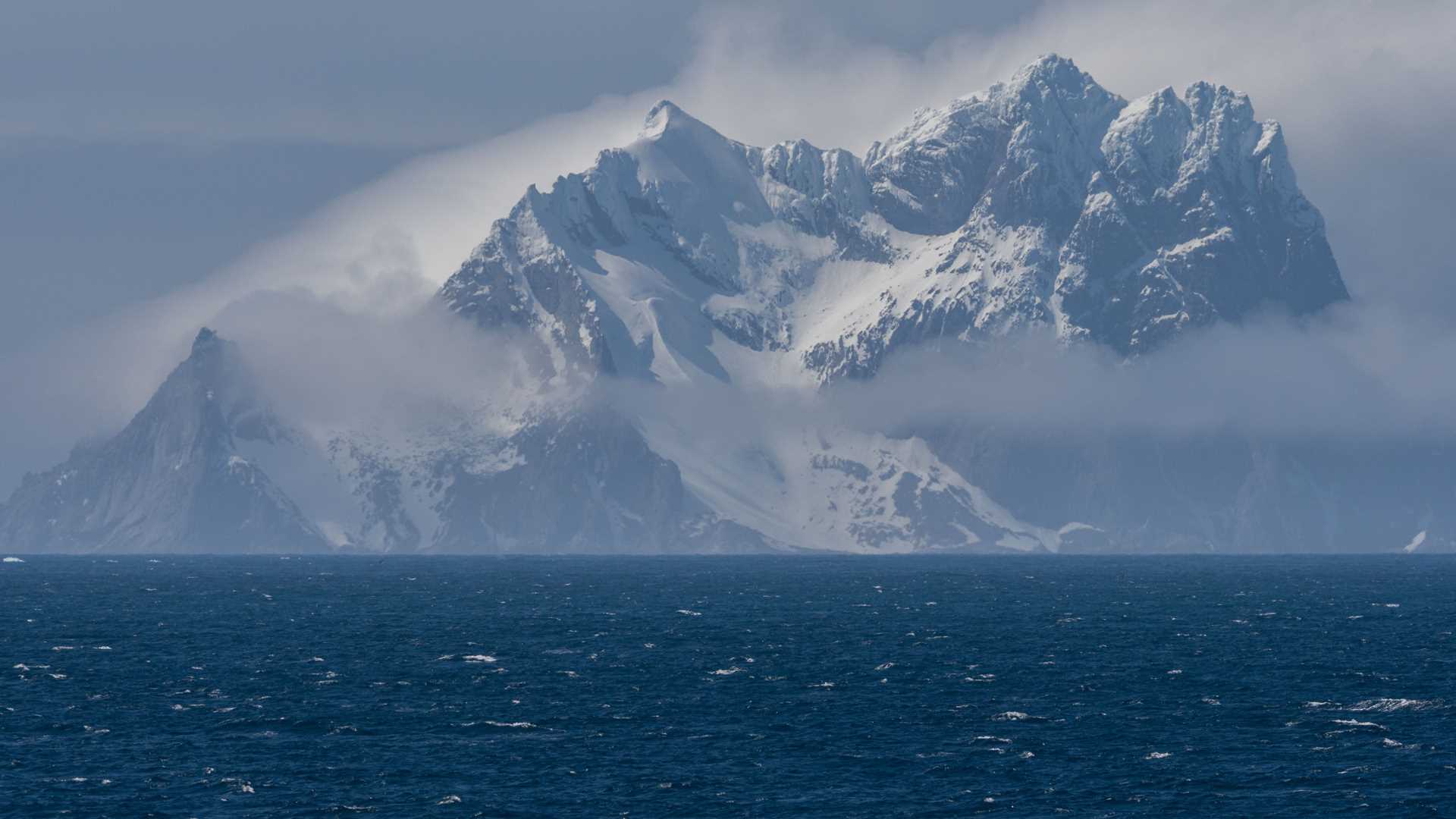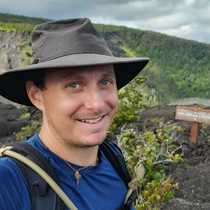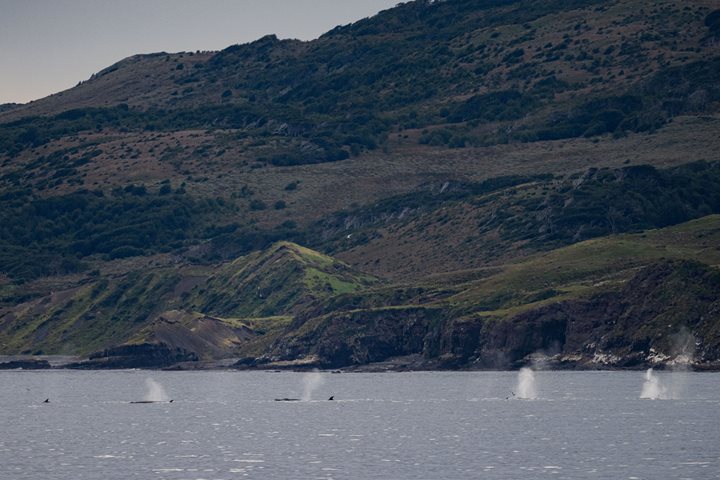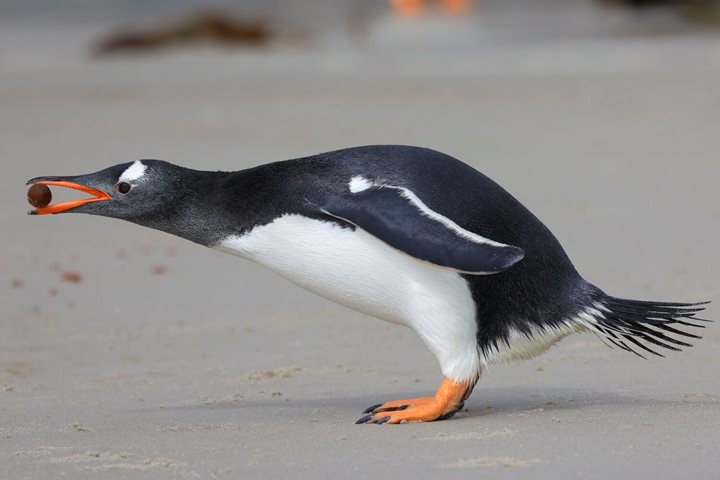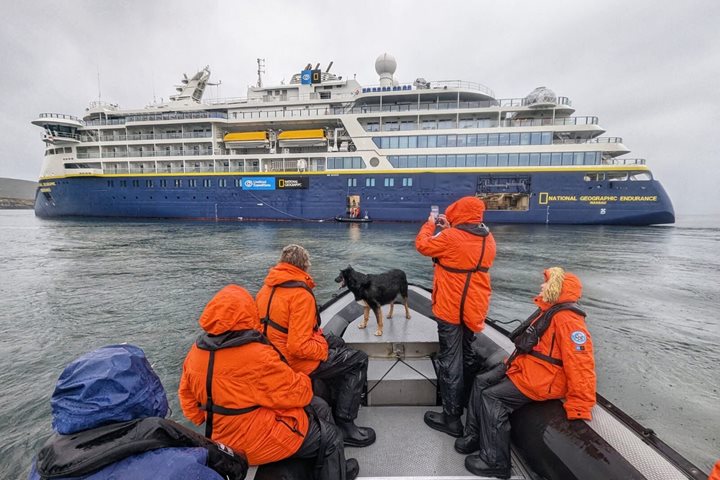As the day started, fog began to part and reveal Elephant Island, our destination for the day. This island was made famous by the story of Ernest Shackleton and the survival of his crew. National Geographic Explorer made its was through wind and waves and we were able to land on the island. We were treated to views of chinstrap and macaroni penguins and both elephant and leopard seals.
In the afternoon, the ship sailed to the historic Point Wild, the launching point for Shackleton as he left his men and sailed 800 miles to get help in South Georgia. For over 100 days his crew waited here, exposed to the elements, waiting for rescue. The day ended cruising through feeding fin whales and photographing elegant sea birds.

